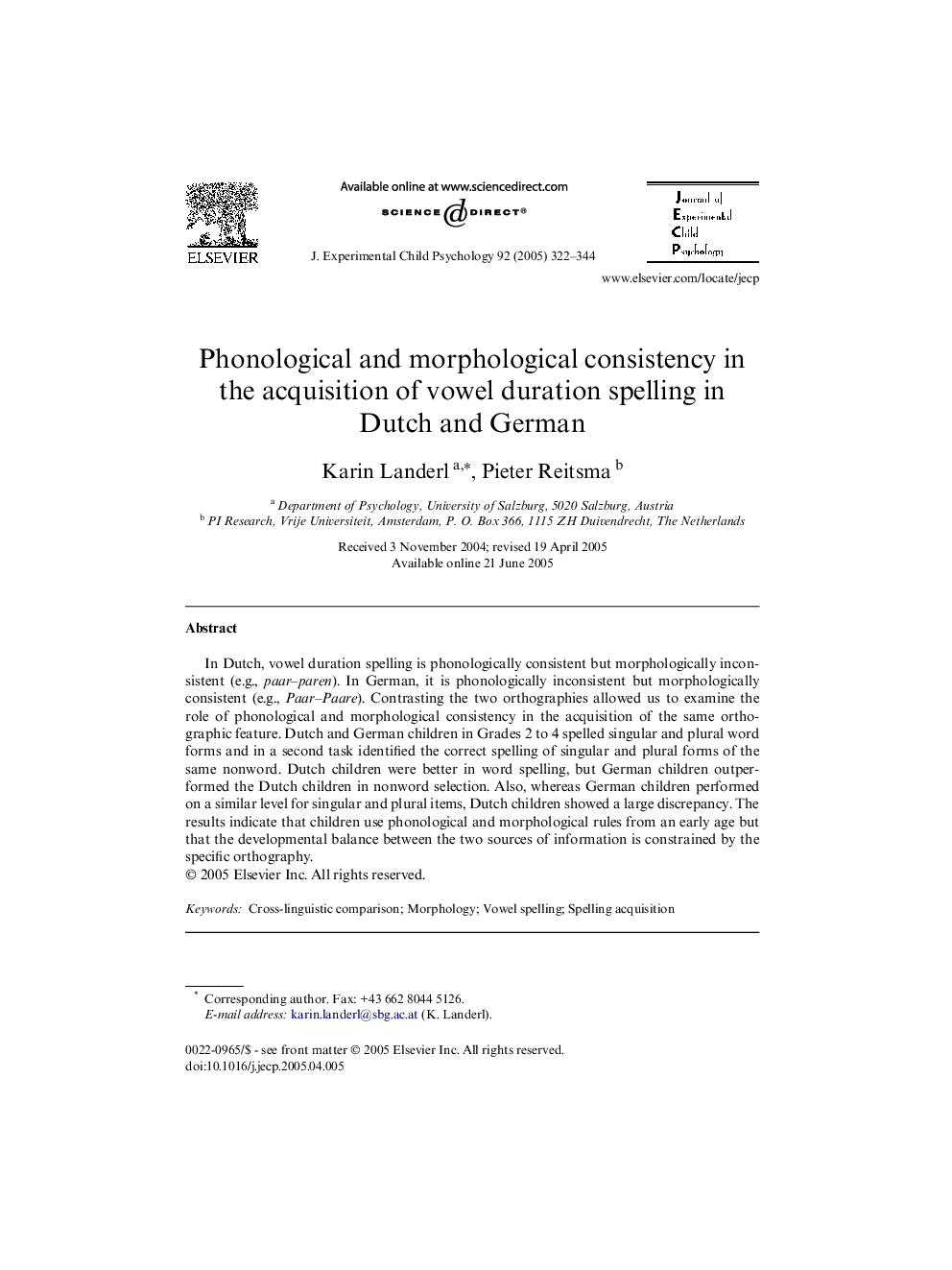| Article ID | Journal | Published Year | Pages | File Type |
|---|---|---|---|---|
| 10453144 | Journal of Experimental Child Psychology | 2005 | 23 Pages |
Abstract
In Dutch, vowel duration spelling is phonologically consistent but morphologically inconsistent (e.g., paar-paren). In German, it is phonologically inconsistent but morphologically consistent (e.g., Paar-Paare). Contrasting the two orthographies allowed us to examine the role of phonological and morphological consistency in the acquisition of the same orthographic feature. Dutch and German children in Grades 2 to 4 spelled singular and plural word forms and in a second task identified the correct spelling of singular and plural forms of the same nonword. Dutch children were better in word spelling, but German children outperformed the Dutch children in nonword selection. Also, whereas German children performed on a similar level for singular and plural items, Dutch children showed a large discrepancy. The results indicate that children use phonological and morphological rules from an early age but that the developmental balance between the two sources of information is constrained by the specific orthography.
Related Topics
Social Sciences and Humanities
Psychology
Developmental and Educational Psychology
Authors
Karin Landerl, Pieter Reitsma,
